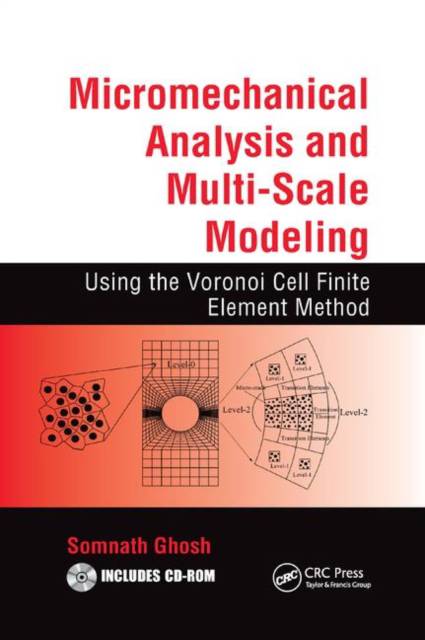
- Afhalen na 1 uur in een winkel met voorraad
- Gratis thuislevering in België vanaf € 30
- Ruim aanbod met 7 miljoen producten
- Afhalen na 1 uur in een winkel met voorraad
- Gratis thuislevering in België vanaf € 30
- Ruim aanbod met 7 miljoen producten
Micromechanical Analysis and Multi-Scale Modeling Using the Voronoi Cell Finite Element Method
Somnath GhoshOmschrijving
As multi-phase metal/alloy systems and polymer, ceramic, or metal matrix composite materials are increasingly being used in industry, the science and technology for these heterogeneous materials has advanced rapidly. By extending analytical and numerical models, engineers can analyze failure characteristics of the materials before they are integrated into the design process. Micromechanical Analysis and Multi-Scale Modeling Using the Voronoi Cell Finite Element Method addresses the key problem of multi-scale failure and deformation of materials that have complex microstructures. The book presents a comprehensive computational mechanics and materials science-based framework for multi-scale analysis.
The focus is on micromechanical analysis using the Voronoi cell finite element method (VCFEM) developed by the author and his research group for the efficient and accurate modeling of materials with non-uniform heterogeneous microstructures. While the topics covered in the book encompass the macroscopic scale of structural components and the microscopic scale of constituent heterogeneities like inclusions or voids, the general framework may be extended to other scales as well.
The book presents the major components of the multi-scale analysis framework in three parts. Dealing with multi-scale image analysis and characterization, the first part of the book covers 2D and 3D image-based microstructure generation and tessellation into Voronoi cells. The second part develops VCFEM for micromechanical stress and failure analysis, as well as thermal analysis, of extended microstructural regions. It examines a range of problems solved by VCFEM, from heat transfer and stress-strain analysis of elastic, elastic-plastic, and viscoplastic material microstructures to microstructural damage models including interfacial debonding and ductile failure. Establishing the multi-scale framework for heterogeneous materials with and without damage, the third part of the book discusses adaptive concurrent multi-scale analysis incorporating bottom-up and top-down modeling.
Including numerical examples and a CD-ROM with VCFEM source codes and input/output files, this book is a valuable reference for researchers, engineers, and professionals involved with predicting the performance and failure of materials in structure-materials interactions.
Specificaties
Betrokkenen
- Auteur(s):
- Uitgeverij:
Inhoud
- Aantal bladzijden:
- 730
- Taal:
- Engels
- Reeks:
Eigenschappen
- Productcode (EAN):
- 9781138372788
- Verschijningsdatum:
- 20/09/2018
- Uitvoering:
- Paperback
- Formaat:
- Trade paperback (VS)
- Afmetingen:
- 152 mm x 234 mm
- Gewicht:
- 1043 g

Alleen bij Standaard Boekhandel
Beoordelingen
We publiceren alleen reviews die voldoen aan de voorwaarden voor reviews. Bekijk onze voorwaarden voor reviews.









